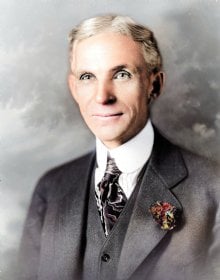"Don't find fault, find a remedy"
About this Quote
Rather than merely pointing out what’s wrong, the words of Henry Ford encourage a proactive, solutions-oriented approach to problems. Criticizing errors or shortcomings is easy, and focusing on faults alone often leads to blame, frustration, and stagnation. True progress and innovation, however, arise when attention shifts from the cause or blame to meaningful actions that resolve the issue.
By urging others to 'find a remedy,' these words emphasize the value of constructive thinking and action. It’s an invitation to channel energy and creativity into making things better, rather than dwelling on mistakes. This outlook fosters an environment where learning and improvement take precedence over judgment. Teams and individuals who adopt this mindset are more likely to collaborate, learn from setbacks, and achieve effective solutions.
In professional and personal contexts alike, the tendency to search for faults can undermine morale and breed resentment. On the other hand, seeking remedies inspires initiative and accountability. People become invested in positive change, seeing every problem as an opportunity for growth and advancement. Addressing problems constructively also supports a culture of trust and empowerment, and leaders who exemplify this behavior encourage the same in others.
Furthermore, this philosophy aligns with innovation and efficiency. When effort is consistently invested in solutions, organizations and individuals adapt faster, overcome obstacles, and remain competitive. Small everyday challenges as well as large, systemic issues benefit from an approach that prioritizes remedies over reproaches.
Adopting this principle means replacing the question “Who is to blame?” with a more productive “What can we do about it?” It is an invitation to take responsibility and initiative, harnessing mistakes as stepping stones rather than stopping points. Ultimately, by seeking remedies instead of faults, individuals and organizations can cultivate resilience, drive progress, and transform difficulties into opportunities for lasting improvement.
About the Author

